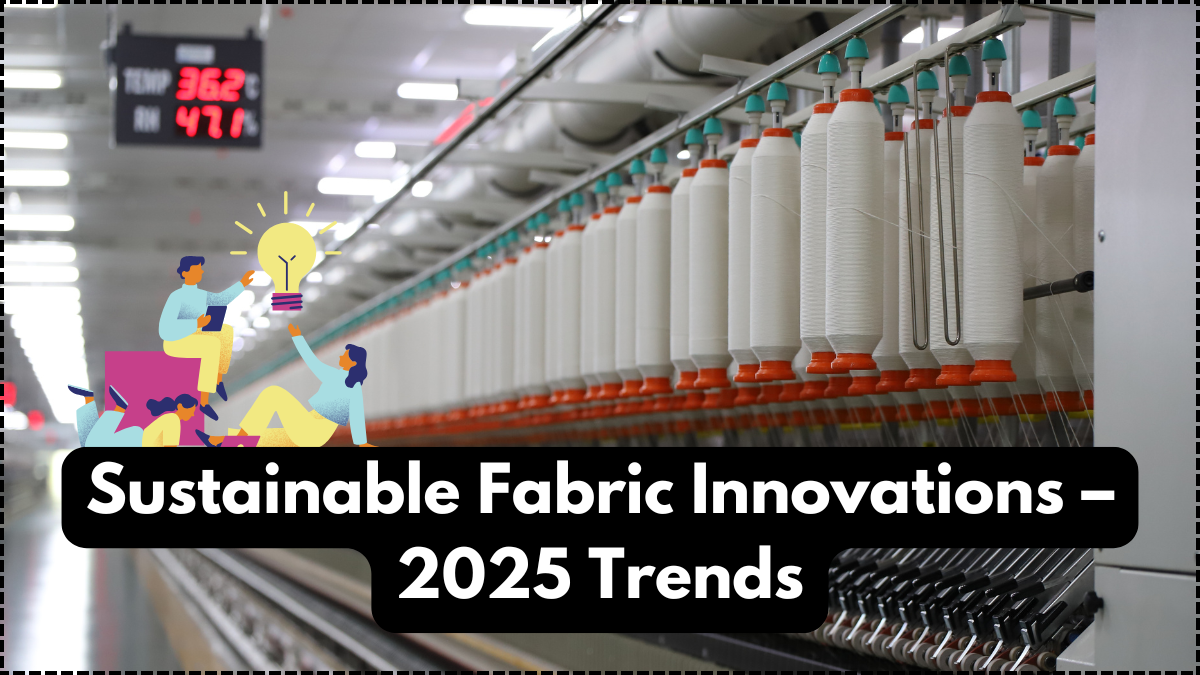The fashion and textile industry is changing rapidly, and Fabric Innovation Trends 2025 show how sustainability is now the driving force. With rising consumer demand for eco-friendly materials, companies are rethinking how fabrics are created, dyed, and distributed. From biodegradable fibers to recycled fabrics, sustainable textiles are shaping the future of clothing, home goods, and industrial materials.
In 2025, innovation in fabrics is no longer optional—it’s essential. Manufacturers, designers, and exporters are all working to keep up with global demand for greener solutions. The Fabric Innovation Trends 2025 provide a roadmap for what’s next, showcasing breakthroughs that combine environmental responsibility with high performance.

Why Sustainable Textiles Are Essential in 2025
Consumers and businesses alike are looking for products that are better for the planet. That’s why Fabric Innovation Trends 2025 focus heavily on sustainable textiles.
The push toward eco-friendly fabrics offers several benefits:
-
Reduced water and chemical usage in production
-
Lower carbon footprints through recycled and organic materials
-
Opportunities for brands to stand out with green credentials
-
Alignment with global regulations on waste and sustainability
As the world moves toward climate-conscious practices, these changes are becoming key for survival and success in the textile industry.
Key Fabric Innovation Trends for 2025
The Fabric Innovation Trends 2025 highlight technologies and materials that are changing the way fabrics are made and used.
| Innovation Type | What It Involves | Impact on Sustainable Textiles |
|---|---|---|
| Bio-based Fabrics | Made from plants, algae, or waste | Reduces reliance on petroleum-based fibers |
| Recycled Textiles | Turning old garments into new fabrics | Cuts landfill waste and resource use |
| Waterless Dyeing | Uses air or CO₂ instead of water | Saves billions of liters annually |
| Smart Fabrics | Embedded with tech for health or fashion | Expands use beyond clothing |
| Compostable Materials | Fully biodegradable fabrics | Eliminates long-term textile waste |
These innovations are not just futuristic ideas—they are being implemented by brands and manufacturers in 2025.
How the Industry Is Adopting Sustainable Fabrics
Shifting to sustainable textiles takes planning, investment, and commitment. Leading manufacturers are aligning with the Fabric Innovation Trends 2025 by changing how they produce, source, and market fabrics.
Steps companies are taking include:
-
Partnering with research labs to develop bio-based materials
-
Investing in recycling facilities to turn textile waste into new fabrics
-
Using certifications to verify sustainable sourcing and production
-
Educating consumers about the benefits of sustainable textiles
These strategies show that the movement toward greener fabrics is not just a trend—it’s a lasting change in how the industry operates.
Conclusion
The Fabric Innovation Trends 2025 make one thing clear: the future of textiles is sustainable. From bio-based fabrics to waterless dyeing, sustainable textiles are revolutionizing what we wear, how we live, and how we think about materials. Companies that embrace these innovations will lead the way, while those who ignore them risk falling behind in a rapidly evolving market.
FAQs
What are the biggest Fabric Innovation Trends 2025?
Bio-based fabrics, recycled textiles, and waterless dyeing are among the top innovations this year.
Why are sustainable textiles important now?
They reduce waste, save resources, and meet global demand for eco-friendly products.
Are these innovations already in use?
Yes, many brands are already producing sustainable textiles using these technologies.
How do recycled textiles help the environment?
They cut landfill waste by turning old garments into new fabrics.
Will sustainable fabrics replace traditional fabrics entirely?
Over time, Fabric Innovation Trends 2025 suggest that eco-friendly options will become the dominant choice for both brands and consumers.
Click here to learn more